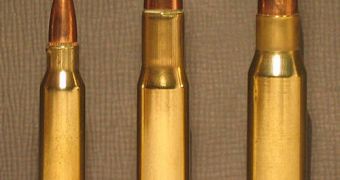Law enforcement agencies around the world rely on a lot of new gadgets to complete their tasks, including powerful computers, state-of-the-art forensics methods, worldwide databases, fingerprint systems, and so on. But even their most basic devices, in use everyday, such as down-the-road (DTR) radars and ballistic chronographs (which are used to measure the speed of bullets), are now about to get a significant boost, thanks to research currently underway at the Office of Law Enforcement Standards (OLES), a part of the National Institute of Standards and Technology (NIST).
For their new study, OLES experts turned their attention to DTR devices, and specifically to the degree of uncertainty they had in measuring the correct speed of a moving vehicle. Currently, police officers and other authorities use four different methods of calibrating their radars before deploying them to catch speed-addicts across the United States. But none of these methods has proven to be very accurate, in the simulations conducted at NIST.
One of the calibration methods, the radar target simulator, uses an audio frequency emitted by a special device, designed to mimic various vehicles at different speeds. This method works best in the lab, and can give weird results on the streets. The tunning forks method, on the other hand, provides the DTR machine with a range of audio frequencies that simulate different vehicle speeds. Another method of calibrating the radar is with a speedometer, when the indicator of a test car is surveyed for the speed it displays. The fourth method, which is in fact a variation of the third, is called the fifth wheel, and measures the speed of a wheel attached to the back of a test car, without surveying the onboard speedometer.
All the uncertainty calculations will be published in the May/June issue of the Journal of Research of the National Institute of Standards and Technology. In charge of the study were OLES researchers John Jendzurski and Nicholas Paulter. They believe that the results will be very useful to police authorities, when it comes to calibrating their new machines.
Another study, led by experts Donald Larson and Nicholas Paulter, and published in the April 2009 issue of the journal Optical Engineering, focused on chronographs. They developed a new version of the instrument, which is up to 20 times more accurate than any other variant on the market today, or which can be supplied on-demand by manufacturers. In fact, the machine is so good, that it can easily be used as a calibration tool for lesser chronographs. These instruments are essential in constructing bullet-proof vests.

 14 DAY TRIAL //
14 DAY TRIAL //